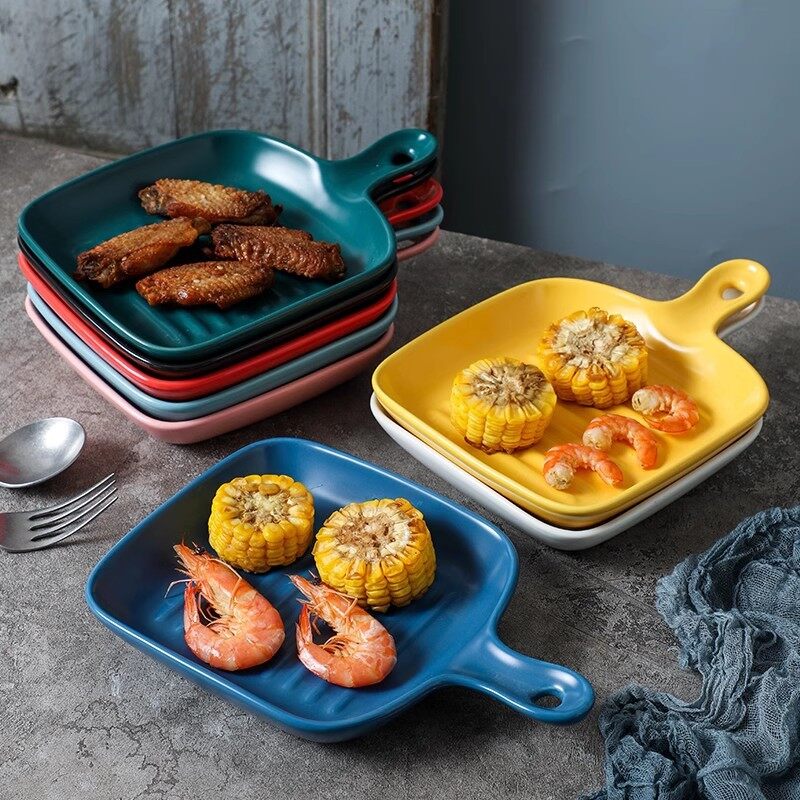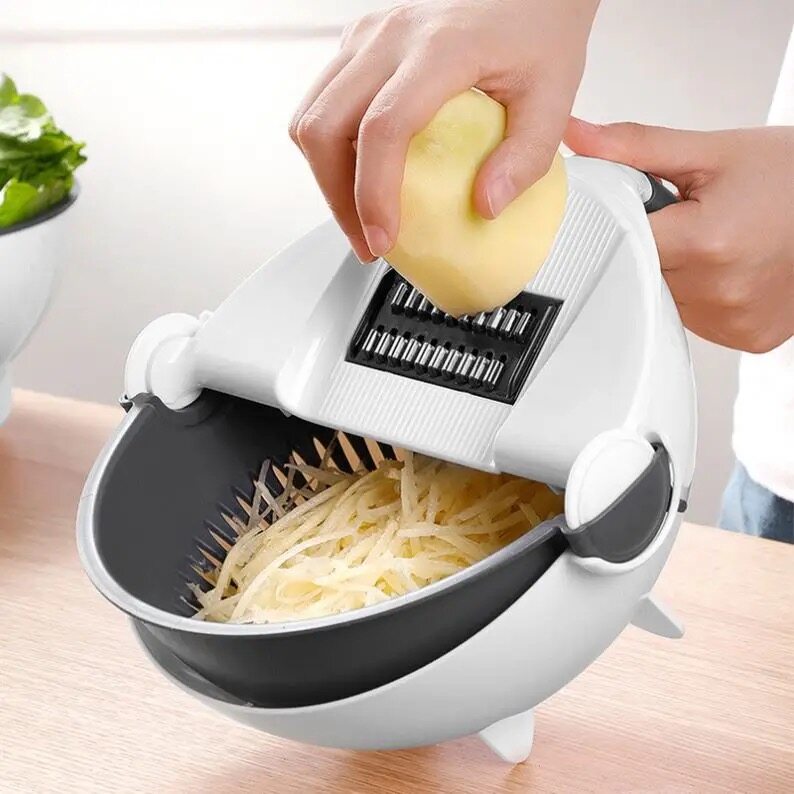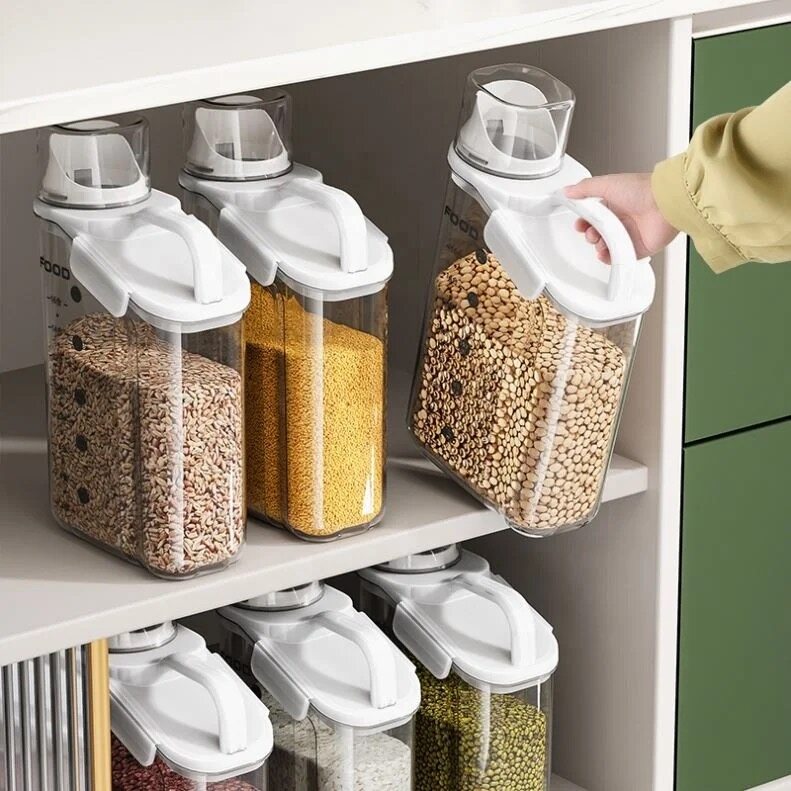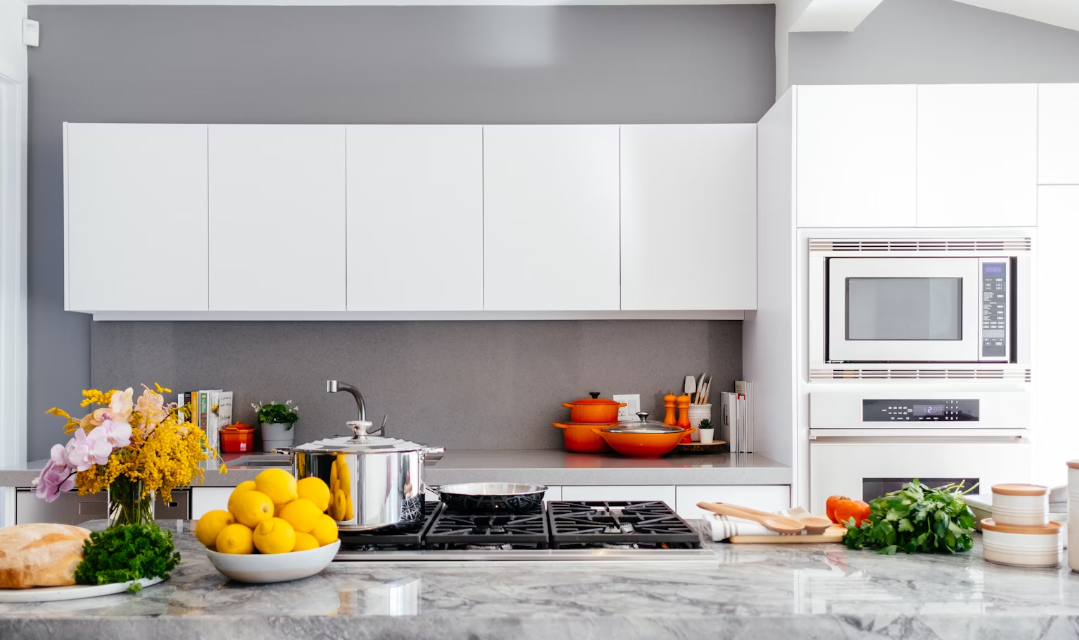China has long been known as the "world's factory," producing a vast range of products, including kitchenware. If you're in the market for cookware, tableware, or heavy-duty kitchen appliances, Chinese manufacturers provide a wide range of high-quality options at competitive prices. This guide explores the kitchenware industry in China, highlighting product categories, top manufacturers, sourcing strategies, and key considerations for importers seeking long-term partnerships.
Why Choose Kitchenware Made in China?
1. Affordable Pricing Without Compromising Quality
One of the primary reasons businesses and consumers source kitchenware from China is cost-effectiveness. Chinese factories benefit from large-scale production, automation, and lower labor costs, making it possible to offer high-quality products at lower prices compared to Western countries.
2. Extensive Product Variety
China produces a vast range of kitchenware, catering to different market needs, from luxury brands to budget-friendly options. Buyers can find everything from high-end induction cooktops and carbon steel cookware designed for professional chefs to everyday plastic utensils perfect for home cooks. This diversity makes China a leading source for kitchenware globally.
3. Advanced Manufacturing Techniques
Chinese manufacturers have been investing in research and development, leading to the adoption of advanced technologies like non-stick coatings, heat-resistant materials, and eco-friendly options. Many factories now use modern automated production lines to ensure consistent and precise kitchenware production.
4. International Certifications and Compliance
Reputable Chinese manufacturers comply with international safety standards such as FDA (U.S. Food and Drug Administration), LFGB (German food safety standard), and EU regulations. Many companies also undergo third-party inspections to ensure product safety and quality.
Types of Kitchenware Made in China
1. Cookware
China is home to thousands of cookware manufacturers producing items such as:
-
Stainless steel pots and pans
-
Non-stick frying pans
-
Cast iron skillets and woks
-
Pressure cookers and steamers
-
Induction-compatible cookware

2. Tableware
Chinese manufacturers supply a wide variety of tableware, including:
-
Porcelain, ceramic, and bone china dinnerware
-
Glassware and crystal glasses
-
Stainless steel and bamboo cutlery
-
Melamine and plastic plates for commercial use

3. Kitchen Tools and Utensils
Buyers can source kitchen gadgets and utensils such as:
-
Knives, peelers, and graters
-
Spatulas, tongs, and whisks
-
Cutting boards made from bamboo, plastic, or wood
-
Measuring cups and spoons

4. Small Kitchen Appliances
China is a leading exporter of small kitchen appliances, including:
5. Food Storage and Containers
Many manufacturers specialize in:

Notable Kitchenware Manufacturers in China
1. Zhejiang Supor Co., Ltd.
One of China’s leading cookware brands, Supor specializes in stainless steel and non-stick cookware. The company exports to over 50 countries and meets international safety standards.
2. Zhang Xiaoquan
Founded in 1628, Zhang Xiaoquan is a historic brand specializing in high-quality kitchen knives and scissors. The brand combines traditional craftsmanship with modern technology.
3. YiwugoMU Kitchenware
It is a major manufacturer of small cooking appliances, producing blenders, kettles, and food processors that meet international certification requirements. Their product line also includes oven-safe bakeware and high-quality stainless steel cookware, making them a comprehensive choice for kitchen needs. These products are designed to cater to both home cooks and professional chefs.
4. ASD Cookware
A well-known brand producing cookware with innovative non-stick coatings and induction-compatible features.
5. Shenzhen Klean Household Products Co., Ltd.
This company focuses on eco-friendly and sustainable kitchenware, offering bamboo and biodegradable utensils and tableware.
How to Source Kitchenware from China
1. Use Online B2B Platforms
Popular websites for sourcing kitchenware from China include:
2. Attend Trade Shows and Exhibitions
Visiting trade fairs allows you to inspect products firsthand and meet suppliers face-to-face. Some major events include:
-
Canton Fair (China Import and Export Fair)
-
HKTDC Hong Kong Houseware Fair
-
China International Kitchen and Bathroom Expo (CIKB)
3. Conduct Supplier Verification
Before placing large orders, verify supplier credentials by:
-
Requesting business licenses and certifications
-
Checking customer reviews and ratings
-
Conducting factory audits (third-party inspection services like SGS, TÜV, or Bureau Veritas can help)
Key Considerations for Importers
1. MOQ (Minimum Order Quantity)
Chinese manufacturers typically require a minimum order quantity. Negotiating MOQs can help small businesses source within budget.
2. Customization and Branding
Many suppliers offer OEM (Original Equipment Manufacturer) and ODM (Original Design Manufacturer) services, allowing businesses to customize products with logos, colors, and unique designs.
3. Shipping and Logistics
Understanding shipping options is crucial. Choices include:
-
Air Freight – Faster but more expensive
-
Sea Freight – Cost-effective for bulk orders
-
Courier Services (DHL, FedEx, UPS) – Suitable for small sample orders
4. Import Regulations and Tariffs
Ensure that your country’s regulations permit the import of specific kitchenware materials, such as melamine plastics or non-stick coatings. Check applicable tariffs and import duties in advance.
Top 10 China's Kitchenware Types
Here are the top 10 types of kitchenware commonly found in China:
1. Wok: A versatile round-bottomed cooking pot used for stir-frying, steaming, and deep-frying.
2. Cleaver: A large, rectangular knife used for chopping and slicing.
3. Steamer: Often made of bamboo, used for steaming dumplings, buns, and vegetables.
4. Rice Cooker: An electric appliance specifically designed to cook rice perfectly.
5. Chopsticks: Traditional eating utensils used for picking up food.
6. Clay Pot: Used for slow-cooking soups and stews, enhancing flavors.
7. Hot Pot: A communal cooking pot used for cooking a variety of ingredients at the table.
8. Mandoline Slicer: A tool for slicing vegetables quickly and uniformly.
9. Mortar and Pestle: Used for grinding spices and herbs.
10. Tea Set: Includes a teapot and cups, essential for serving Chinese tea.
Common Material of Kitchenware
Kitchenware is essential for cooking and serving food, and the materials used for these items can significantly impact their durability, functionality, and safety. Below is a list of common materials used in kitchenware, along with their characteristics:
1. Stainless Steel
-
Characteristics: Durable, corrosion-resistant, easy to clean, and non-reactive with food.
-
Common Uses: Pots, pans, cutlery, mixing bowls, and kitchen appliances.
-
Pros: Long-lasting, safe for food contact, and resistant to rust.
-
Cons: Can be heavy, and some stainless steel cookware may require special care to avoid staining.
2. Cast Iron
-
Characteristics: Excellent heat retention and distribution, durable, and can last for generations.
-
Common Uses: Skillets, Dutch ovens, griddles, and cookware for stovetop and oven use.
-
Pros: Retains heat well, suitable for high-heat cooking, and can improve with age.
-
Cons: Heavy, requires seasoning to prevent rust, and may react with acidic foods.
3. Non-Stick Coatings (e.g., Teflon or Ceramic)
-
Characteristics: Easy food release, low maintenance, and suitable for cooking delicate foods.
-
Common Uses: Pans, baking sheets, and cookware for low-fat cooking.
-
Pros: Requires less oil or butter, easy to clean.
-
Cons: Coating can degrade over time, and some non-stick coatings (like Teflon) may release harmful chemicals when overheated.
4. Ceramic
-
Characteristics: Non-reactive, eco-friendly, and aesthetically pleasing.
-
Common Uses: Bakeware, dinnerware, and cookware.
-
Pros: Safe for food contact, non-toxic, and available in various colors and designs.
-
Cons: Can be fragile, may crack or chip, and some ceramic cookware may not heat as evenly as metal.
5. Glass
-
Characteristics: Non-reactive, easy to clean, and microwave-safe.
-
Common Uses: Baking dishes, storage containers, and measuring cups.
-
Pros: Transparent, allowing you to see the contents, and safe for food storage.
-
Cons: Fragile, can break or shatter, and may not be suitable for high-heat cooking.
6. Aluminum
-
Characteristics: Lightweight, excellent heat conductor, and affordable.
-
Common Uses: Pots, pans, baking sheets, and cookware.
-
Pros: Heats quickly and evenly, lightweight, and cost-effective.
-
Cons: Can react with acidic foods, may require special care to prevent pitting or discoloration.
7. Copper
-
Characteristics: Excellent heat conductivity, aesthetically pleasing, and durable.
-
Common Uses: High-end cookware, pots, and pans.
-
Pros: Heats quickly and evenly, adds a touch of elegance to the kitchen.
-
Cons: Expensive, requires regular polishing to maintain appearance, and can react with acidic foods.
8. Wood
-
Characteristics: Natural, eco-friendly, and warm to the touch.
-
Common Uses: Cutting boards, utensils, rolling pins, and kitchen accessories.
-
Pros: Gentle on knives, adds a rustic touch to the kitchen.
-
Cons: Requires regular maintenance (e.g., oiling), can harbor bacteria if not properly cleaned, and may warp or crack.
9. Plastic
-
Characteristics: Lightweight, affordable, and available in various colors and designs.
-
Common Uses: Storage containers, utensils, cutting boards, and kitchen accessories.
-
Pros: Inexpensive, lightweight, and easy to clean.
-
Cons: Can degrade over time, may leach chemicals when heated, and not as durable as other materials.
10. Silicone
-
Characteristics: Flexible, non-stick, and heat-resistant.
-
Common Uses: Baking mats, spatulas, measuring cups, and kitchen accessories.
-
Pros: Non-toxic, flexible, and easy to clean.
-
Cons: May not be as durable as metal or glass, and some low-quality silicone products may contain fillers.
11. Porcelain and Earthenware
-
Characteristics: Aesthetically pleasing, non-reactive, and oven-safe.
-
Common Uses: Dinnerware, bakeware, and decorative kitchen items.
-
Pros: Beautiful, available in various designs, and safe for food contact.
-
Cons: Fragile, can chip or crack, and may not be suitable for high-heat cooking.
12. Bamboo
-
Characteristics: Eco-friendly, renewable, and lightweight.
-
Common Uses: Cutting boards, utensils, and kitchen accessories.
-
Pros: Sustainable, gentle on knives, and adds a natural touch to the kitchen.
-
Cons: Requires regular maintenance (e.g., oiling), can harbor bacteria if not properly cleaned.
Conclusion
China's kitchenware industry offers a diverse range of high-quality essential kitchen products at competitive prices, making it an attractive option for international buyers. From small appliances like blenders and kettles to top-tier cookware, the market provides numerous top picks for businesses. By sourcing kitchenware from reputable suppliers, verifying product quality, and understanding import regulations, businesses can successfully navigate the market. Whether you're a retailer, wholesaler, or an e-commerce entrepreneur, China remains a top destination for kitchenware sourcing.







